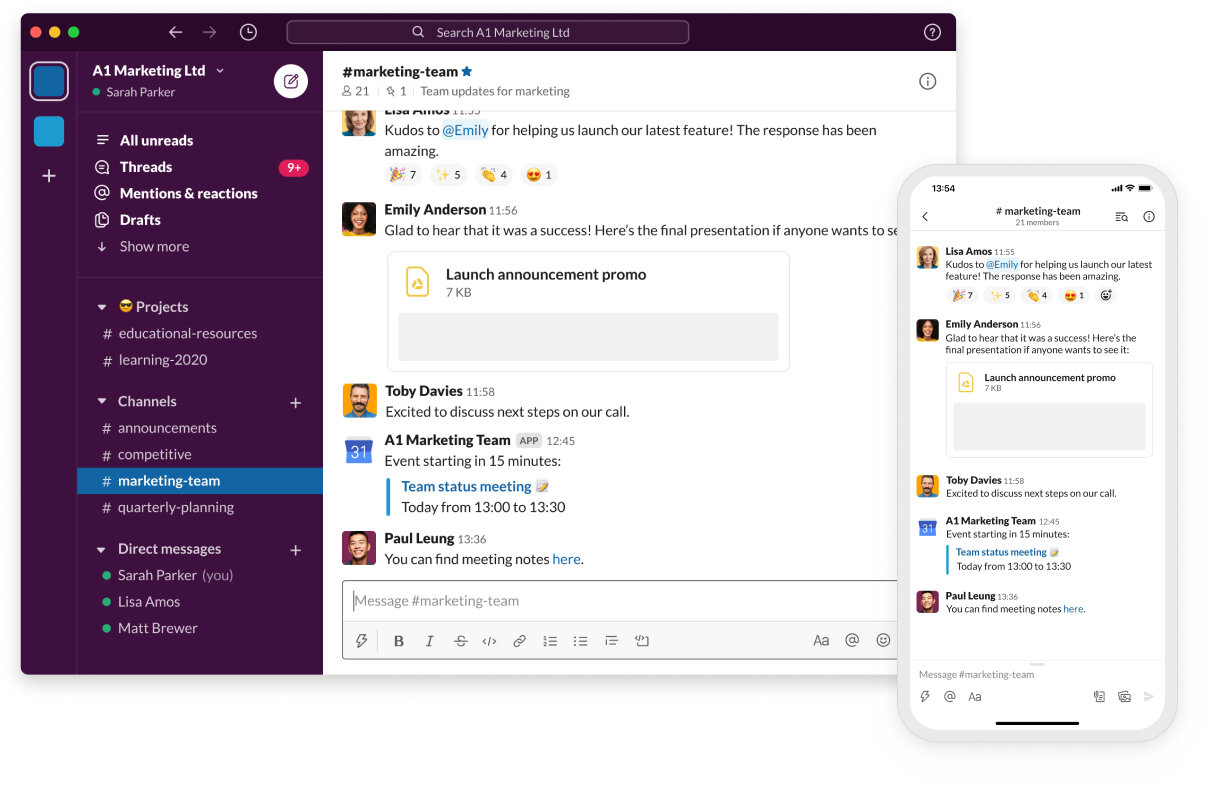5 Apps To Keep You On Track
#1 Slack
A powerful tool that promotes productivity through better communication and collaboration, we credit Slack with what kept us sane since we all started working from home almost a year ago.
We're juggling multiple projects at any given time, and Slack allows us to keep all our project and business communication organised in their own individual channels.
Slack boasts a huge range of features (including powerful automation through their Workflow Builder), but we're particularly fond of its search function for quick recall and its seamless integration with a whole range of other tools we use.
Better yet, as a small team you could probably get away with their Free version - though we highly recommend stepping up to the Standard plan - a small price to pay for better productivity.
Pricing: Free version available. Paid plans starting from $US6.67 per user per month.
#2 Harvest
Managing our time is one thing, but accurately tracking it and comparing it to project budgets for profit and loss - that's another.
Harvest was a recommendation from our mate Angus at Bopple, and since we started using it, we've never looked back. Harvest is quick to master, intuitive and great value for its reporting power.
Here's a little time-tracking hack for Google Workspace users: Set yourself up with a dedicated Google calendar for time-tracking, quickly add and adjust your blocks of time throughout the day, then after integrating the Google Calendar with your Harvest workspace you can bash out your timesheet for the day in under 5 minutes, just by reconciling your time blocks with the right client, project and task.
Pricing: Free plan available. Paid plans starting from US$10.80 per user per month when you pay annually.
#3 Notion
A collaborative alternative to Evernote that's our secret weapon when it comes to website projects.
Notion scratches one of the only itches that Slack doesn’t, allowing you to easily build your own systems and databases for resources. We find it particularly great for website projects, where we can build out design systems and host an organised database of code snippets for future use.
Pricing: Free version available. Paid plans starting from US$4 per user per month.
#4 Microsoft To-Do
Formerly known as Wunderlist, Microsoft To-Do is a fantastic (and free) App that syncs with your phone and desktop versions. Whilst it can be used collaboratively with other users, this is the one we turn to for ticking off our own smaller business and personal tasks throughout the day.
The UX and UI is pretty well thought-out with some very satisfying little pings as you cross off yet another milestone.
As the desktop and mobile versions of the app automatically sync, I'll find myself adding items to my grocery shopping list throughout the week, then ticking off each item in the supermarket as they land in the trolley.
Pricing: Free from the App Store.
#5 Xero
As a small creative team, we want to spend more of our time working on what we do best - doing our best possible creative work for clients and growing our business. The less time managing the books, the better.
Thankfully, Xero makes all those dull tasks a dream - covering our quoting, invoicing, payroll, expenses, PAYG and BAS so quickly and easily.
Xero plans start from AU$25 p/month (a good option for freelancers and sole traders), but for businesses like ours we recommend the Premium5 plan for AU$65p/month plan. That step up from the Standard Plan (AU$50 p/month) covers automation for Superannuation, which is one less thing to worry about each quarter.
Pricing: Paid plans starting from AU$25p/month.
You might also like






